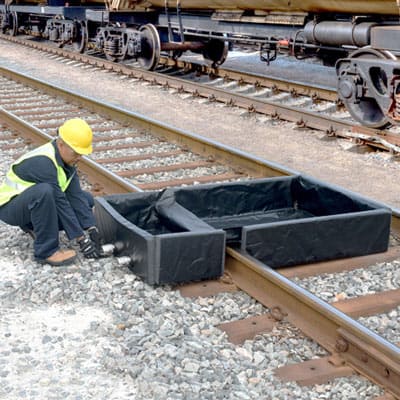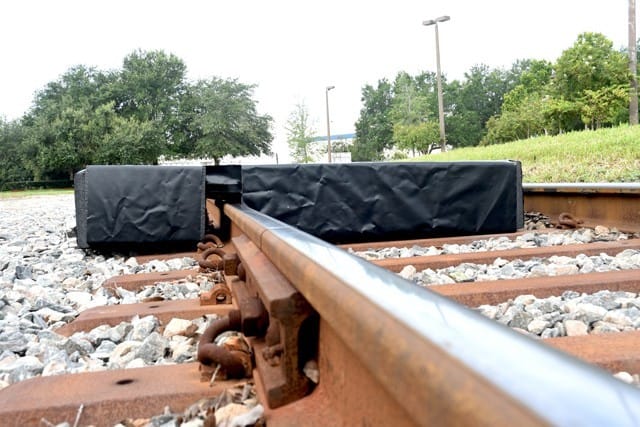Railroads are a vital part of our transportation infrastructure, carrying goods across vast distances efficiently. However, with the transportation of hazardous materials like oil and chemicals, there’s always a risk of leaks and spills. Designing railroad track berms with environmental considerations is crucial to minimizing the impact of such accidents. In this article, we will explore the key aspects of designing berms around railroad tracks to handle tanker car leaks and spills effectively.
Understanding the Importance of Railroad Track Berms
Railroad track berms are elevated structures built alongside tracks to contain and manage spills. These berms are particularly important for tanker cars carrying hazardous materials. When designed correctly, they can prevent leaks from spreading, protecting the surrounding environment and communities.

The Role of Berms in Spill Management
Berms act as barriers that confine spills to a controlled area, allowing for easier cleanup and reducing the risk of environmental contamination. They are designed to channel spilled materials into designated containment areas, preventing them from seeping into the soil or nearby water bodies.
Key Environmental Considerations in Berm Design
When designing railroad track berms, several environmental factors must be taken into account to ensure their effectiveness and minimize ecological impact.
Material Selection for Berm Construction
The materials used in constructing berms play a significant role in their durability and effectiveness. Engineers must select materials that are resistant to chemical corrosion and can withstand the elements. Common choices include reinforced concrete, compacted clay, and synthetic liners.
Berm Height and Slope
The height and slope of a berm are critical to its performance. Berms must be tall enough to contain potential spills but not so high that they impede regular railroad operations. The slope should be gentle enough to prevent erosion and allow for easy maintenance.
Integration with Natural Landscape
Designers should aim to integrate berms seamlessly with the surrounding landscape. This not only enhances the aesthetic appeal but also reduces environmental disruption. Vegetation can be planted on berms to stabilize the soil and provide habitat for local wildlife.

Addressing Tanker Car Leaks and Spills
Tanker car leaks and spills can have devastating environmental consequences if not managed properly. Here are some strategies to enhance berm design for spill containment.
Implementing Spill Prevention Measures
Prevention is always better than cleanup. Implementing measures such as regular maintenance and inspection of tanker cars can significantly reduce the risk of leaks. Berms can serve as a secondary line of defense in case of a spill, but the primary goal should be to prevent spills from occurring in the first place.
Emergency Response Planning
A well-designed berm system should be part of a comprehensive emergency response plan. This plan should include procedures for quickly containing and cleaning up spills, as well as strategies for minimizing environmental damage. Regular drills and training for personnel can ensure preparedness in case of an actual spill.
Monitoring and Maintenance
Continuous monitoring and maintenance of berms are essential to ensure their effectiveness. Regular inspections can identify potential weaknesses or damage that could compromise their ability to contain spills. Maintenance activities should include repairing erosion, removing debris, and ensuring the integrity of containment systems.
Conclusion
Railroad track berms are a crucial component of environmental protection in the transportation of hazardous materials. By considering factors such as material selection, integration with the natural landscape, and emergency response planning, we can design berms that effectively manage spills and protect the environment. As we continue to rely on railroads for transportation, investing in well-designed berms will be essential to ensuring safety and sustainability.
In conclusion, the design of railroad track berms must prioritize environmental considerations to mitigate the risks associated with tanker car leaks and spills. Through careful planning, material selection, and ongoing maintenance, we can create berms that effectively contain spills and safeguard our natural surroundings.
Shop at Absorbents Online for Quality Railroad Track Berms
For those responsible for maintaining safe and environmentally conscious railroad operations, investing in quality berms is essential. Absorbents Online offers a wide selection of railroad track berms designed to meet the highest standards in spill containment and environmental protection. Browse our collection today to find berm solutions that ensure the safety and sustainability of your rail infrastructure. Visit Absorbents Online and take the first step toward safeguarding your operations and the environment.